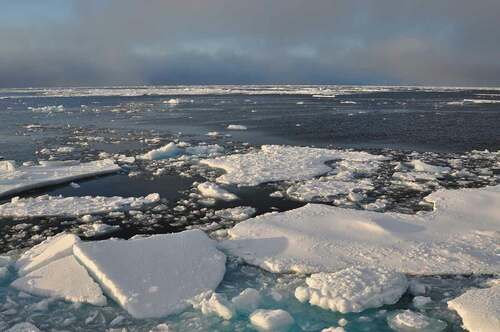Figures & data
Figure 1. Scientist define the Arctic as ice-free even if a small amount of remnant sea ice remains – less than 1 million square kilometers. This is analogous to considering a lake to be ice-free, even when some scattered ice floes still exist along the shore. For perspective, the record-low Arctic sea ice cover was 3.4 million square kilometers in 2012.Citation4 Photograph by Patrick Kelley, U.S. Coast Guard – “Blue sky begins to break through the clouds over Arctic Ocean ice Sept. 9, 2009.”

Figure 2. Timing of a seasonally ice-free Arctic simulated by five climate modelsCitation3 and based on high future carbon emissions. Colored lines represent varying estimates across models, due to different representations of climatic processes (the second source of uncertainty described in the text). Each model’s average estimate is denoted by an asterisk, while the range within each model is indicated by the width of the line and is due to internal variability in the climate system that cannot be predicted (the third source of uncertainty). For example, 100 runs of the MPI-ESM model (red bar) predict a seasonally ice-free Arctic as early as 2036 and as late as 2058 (mean date 2049) as a result of tiny differences in simulation starting conditions. Note the large spread of timing based on the average estimates among models, ranging from as early as 2022 to as late as 2067.

